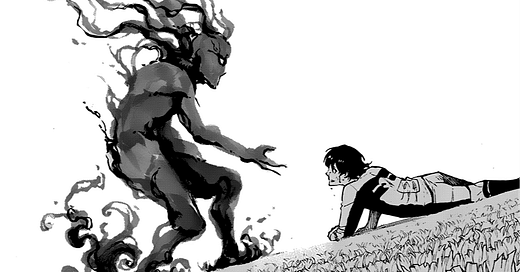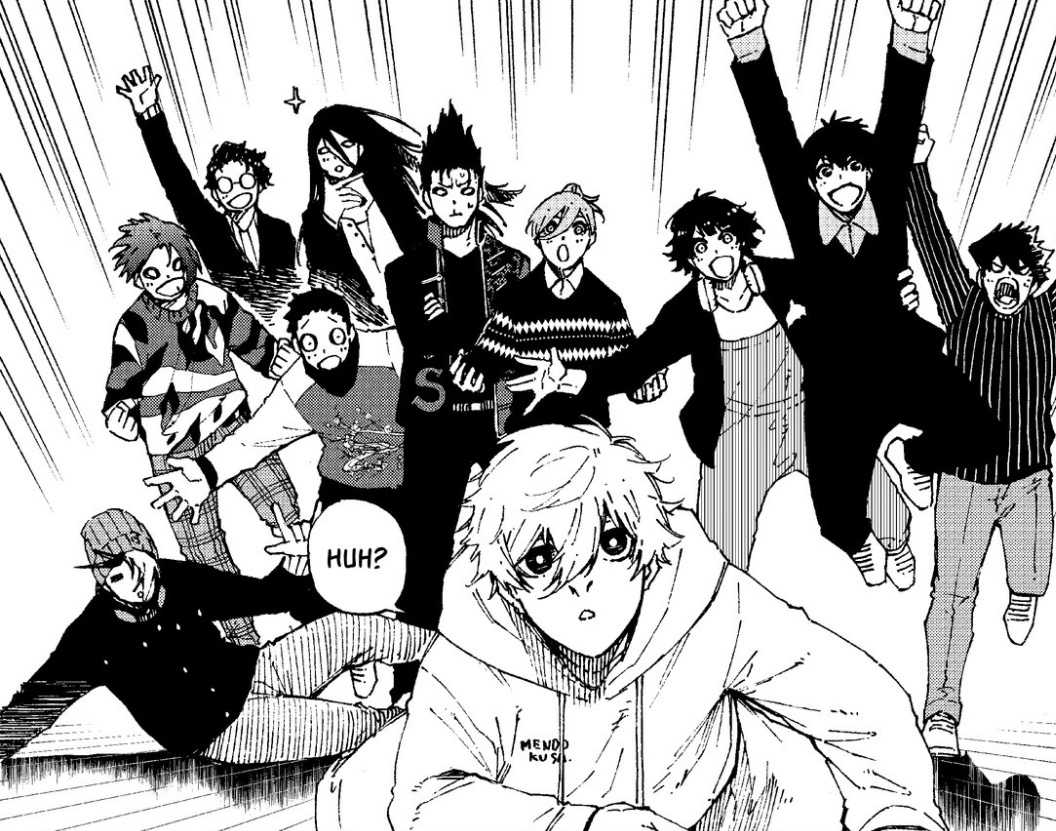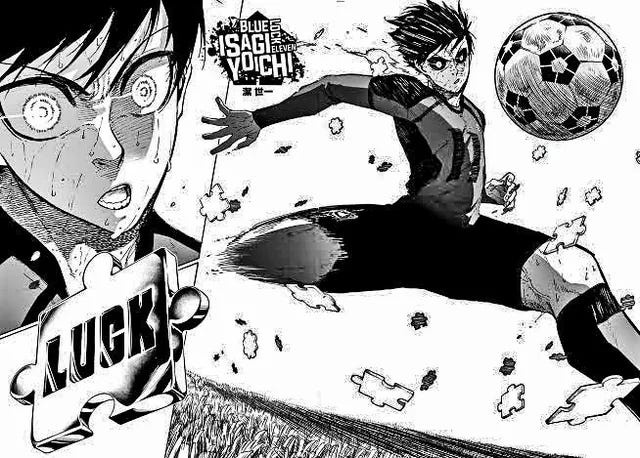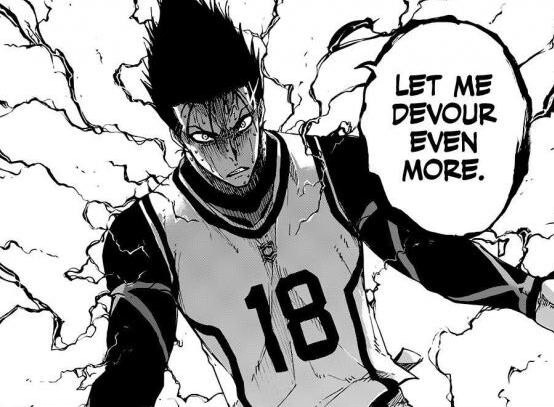Blue Lock: Calculable Goals and Level Stakes
If you level up in the woods and no one is around to hear it, does it make a sound?
Preface!
We all understand that I’m hopelessly in love with Blue Lock, yes? I feel as though I’ve made this abundantly clear. But this time I’m rereading it with a specific purpose: character development.
Have you ever read or reread a story through a specific lens? It’s pretty crazy what you will find, and what you missed the first time.
Anyway, I was looking for character development as the primary quest, but I also had the side quest of keeping an eye on stakes, and how manga keep the tension when there is no clear possibility of death or world destruction. How do you maintain stakes that feel as real and as heavy as when the fate of the world is hanging in the balance?
Turns out, Blue Lock provided the perfect case study, because doesn’t it always, it’s a masterpiece.
Preface over.
One of my favorite “challenges” of writing stories for kids is conveying what the stakes of being a kid feel like. It’s not easy to remember what it was like being a kid, but for the most part, kids have limited understanding of such things as mortality or financial burdens. Even in the unfortunate situations where they encounter these things, their perspective of it is skewed.
On the flip side, something as “small” as breaking a toy or not getting a large milkshake instead of a medium has massive repercussions. Namely screaming and tears.
The same principle can be applied when you’re thinking about the stakes of a story. Not every story is going to have the fate of the world at stake, though many do, especially in manga. Attack on Titan’s stakes are built on the last enclave of humanity. My Hero Academia’s stakes are the destruction of the free world.
There are some hefty stakes going around out there. Knowing that, how do stories with lesser stakes keep the tension on a level playing field? Well, one tactic is what The Summer Hikaru Died does—subtlety. Keeping your cards close to your chest and not showing what is and isn’t possible.
But some stories, like Blue Lock, Haikyu!!, and many, many more, don’t have much to hide. I mean, we’re playing soccer, chances are you’re not going to fall into a vat of acid if you fail. That would be kinda neat though. Also, side note, that is 100% what I expected when I first saw Blue Lock pitched as “the World Cup meets Squid Games.”
Anyway, the short answer: You have to let the reader/viewer see into the head of your characters and truly understand what this means to them, and what’s at stake if they don’t achieve the goal. And then, you have to clearly capture how much work they put into achieving that goal.
Let’s look at Blue Lock (my favorite words). Blue Lock does a fantastic job of setting up the stakes right from the start: Here are the most talented high school soccer strikers in Japan. Only one will win. The rest won’t just lose, but they will be banned from ever playing for the Japanese National Team.
That last bit is the important part—ever! At first, this felt unnecessary to me. Like a device to twist the screw just for the sake of twisting it. But then I got to thinking that it does serve a narrative purpose. The goal is to get these kids to grow, or level up, without a safety net. So they have to throw everything they have at it. They have to have something to lose. If all they lose is the shot to be “the best,” well that’s not very tense. It’s pretty chill, honestly.
So, with this primary goal in mind, we now have the cliff each character can fall off, now how does Blue Lock use that to build a clear and defined character arc for practically everyone on this singular journey? If you read the title of this post (or if you haven’t, you may do so now, I’ll wait), you’ll know the answer: calculable goals. Having something clearly at stake is always going to help make a nice clean stage with which the story can perform, but part two of this necessary step is what those stakes do for the characters. Because if they’re just walking along the cliffside, shooting the shit, that doesn’t make for great storytelling.
The importance of a calculable goal is that it makes it easy for readers to see and clock when a character grows or achieves something. And this is a facet in which manga is unmatched in storytelling—character growth. There are some wonderful, creative ways that different series show growth.
For series like Solo Leveling or Shangri-La Frontier, characters literally level up. Their stats go up, like a video game. This way is both valid and straigt-up sick. I love it.
Then you have series like Jujutsu Kaisen or My Hero Academia, where characters learn new special moves or powers and grow in that way. This way is pretty standard for action-based manga.
What Blue Lock does though, is they take a growth moment and they blow it up, almost like the board of a private detective tracking a killer, with all the suspects and the yarn and whatnot. Every time there’s an obstacle, the character recognizes that this is an obstacle and actively engages in the thought process of how to overcome it. In that way, we literally see them growing in real time, unlike those series mentioned above, where it kinda just happens as a result of them having overcome an obstacle. As I tell everyone with ears, Blue Lock captures the psychology of sport and distills it to a casual audience better than anything I’ve seen.
In Blue Lock, they actively face obstacles, regularly fail as they try to beat it, try new things, dig into their sense of self, maybe cry a little, and then “level up” to their better, more improved sense of self. And these moments happen all the time. Notice I italicized all the time because I’m super serious about this.
An example. When our protagonist Isagi faces Rin (the best player in Blue Lock) in a crucial three-on-three match, he loses. But this is the first step in Isagi’s big leveling up moment. He fails first (losing) and then has to understand why he lost, he then cries about it, Nagi slaps him around a little bit, then he sees that Nagi has leveled up in the next match, and that prompts Isagi to level up too, and he wins his next match, which was do or die. If he’d have lost, he would have gone home.
And there we are, back at why the clear stakes matter so much. It makes these leveling up moments that much more sharp and effective.
Another example. And this happens literally right after Isagi wins this latest two on two. He then adds Barou to his team (my man Barou!), but Barou is super selfish, and detrimental to their team, which forces Isagi to level up in a new way, learning how to grow from Barou, but also how to incorporate Barou into their plans. So while he had to level up on an individual level previously, here he has to level up on the relationship level, learning how to work with Barou.
Which is another thing about these calculable goals—they are always different. It’s not a recycled, “oh I lost, better learn from it, yay I did,” every time. It’s always changing shapes and sizes, but with the benefit of clear stakes and calculable obstacles, it’s so easy to track character growth, and it’s so exciting too. Because even though we essentially know that Isagi is going to grow and improve, we don’t know in what way.
And it’s not just Isagi either. Even though we primarily see the growth of Isagi, we can extrapolate (love that word) what’s happening in his head to everyone else’s, because they’re all growing too. Bachira for example (who is sitting right next to me, by the way), has a “monster” living inside of him and while we get the occasional checkpoint moment where he’s learning to operate with this monster and then without it, the primary growth is happening off the page. But we can fill the gaps with what we know is happening in Isagi’s head.
Same goes with Barou (who is also sitting next to me). While we get some great moments in his head, watching him grow and change, we also get to bring our own interpretation of what he’s been doing when not near Isagi to learn and grow. Because he absolutely has been.
It’s not easy to grow a single character, let alone a whole cast. And by whole, I mean like 20+ people. But yet again it’s the unique set-up of Blue Lock that makes this attainable. Since everyone faces the same obstacles on the same playing field, our ability as readers to infer what’s been going on outside of the immediate scope is vital to seeing the full spectrum of character development in this series.
Obviously not every series is set up in such a way that we can infer beat-by-beat what each character is facing, but that doesn’t mean it shouldn’t still happen. No matter where your characters go, no matter how far from the scope of the story, recognize that they are going through their own challenges. It’s not a terrible idea to write those scenes anyway, even if you’re not going to use them in the end.
For creative writers: How do you calculate how your characters grow? Try to “block” it, as if on a stage. What is the obstacle, how do they see it, how do they approach it, and how to they eventually overcome it?
For fans of Blue Lock: Who’s growth is most exciting to you? Mine’s Barou.







